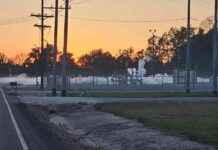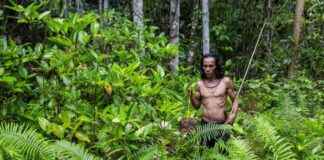Protecting Indigenous Land Rights: Addressing Violence and Threats
In a groundbreaking global study, researchers have found that the safety of Indigenous land defenders is increasingly under threat, with physical attacks and threats often serving as a grim precursor to fatal outcomes. Last year alone, a staggering 177 land defenders lost their lives, highlighting the urgent need for enhanced protection measures to safeguard these individuals who courageously stand up for their communities and the environment against destructive development projects.
Nonlethal Incidents and Probable Perpetrators
In a recent report by the Alliance for Land, Indigenous, and Environmental Defenders (ALLIED), it was revealed that there were 916 nonlethal incidents in 46 countries in 2022, averaging about five incidents for every death. These nonlethal incidents encompass a range of threats, from written and verbal warnings to kidnapping, detention, and physical assaults. The probable perpetrators identified by ALLIED include paramilitary forces, police, local government officials, private security guards, and corporations.
Disproportionate Impact on Indigenous Communities
Interestingly, the study also found that nearly a quarter of the victims of nonlethal incidents were Indigenous individuals, despite Indigenous people making up only 6 percent of the global population. Eva Hershaw, co-chair of ALLIED, emphasized that Indigenous peoples are disproportionately targeted with violence, particularly in the form of assaults and threats that precede fatal attacks.
Risk Factors and Calls for Accountability
The report shed light on several risk factors contributing to violent incidents, including unclear land rights, the presence of private businesses in communities, and weak rule of law. Philippe Le Billon, a professor at the University of British Columbia, stressed the importance of using this data to prevent further violence and promote transparency in areas where legal protections are lacking. He emphasized the need for companies to be accountable for their actions and to engage in conflict resolution processes with affected communities.
Challenges Faced by Indigenous Communities
The report also highlighted the challenges faced by Indigenous communities in seeking justice for violence and land rights violations. Pursuing compensation for loss of loved ones and land is a complex and arduous process, often requiring significant resources and time. Le Billon noted that legal battles can stretch on for decades, underscoring the need for better documentation and support mechanisms for Indigenous land protectors.
As the world grapples with increasing demands for energy and resource extraction, Indigenous communities face heightened risks of violence and threats. The report calls for national governments to improve documentation of attacks and strengthen legal protections for vulnerable communities. It also urges corporations to be held accountable for actions that jeopardize the safety and well-being of Indigenous land defenders.
In light of these findings, ALLIED plans to release data on nonlethal attacks in 2023 and 2024 at COP30, the United Nations climate change conference in Brazil. The data is crucial for raising awareness, advocating for policy changes, and ultimately ensuring the safety and rights of Indigenous communities worldwide.
By shedding light on the challenges faced by Indigenous land defenders, we can work towards a more just and equitable future for all communities who seek to protect their lands and resources.














